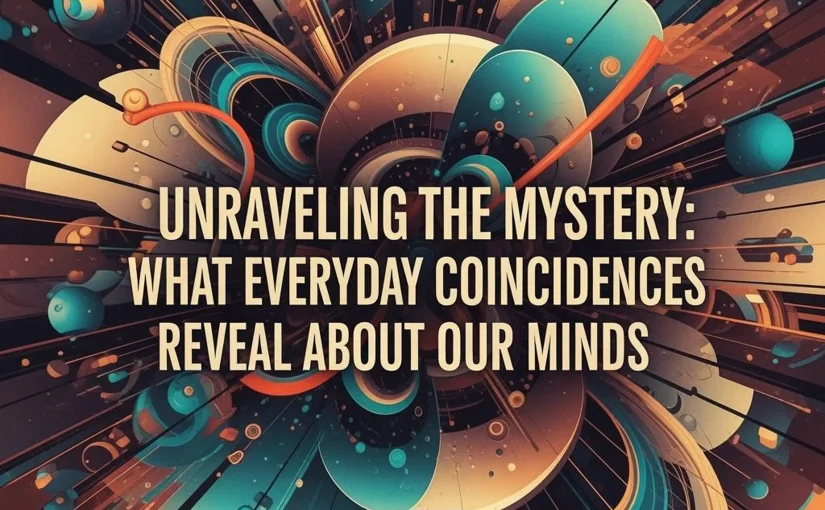Coincidences are those strange, unexpected moments when two or more related events occur together, seemingly by chance. You think of a friend and they suddenly call; you encounter a rare word twice in one day; you run into someone you know in a faraway city. These occurrences can feel magical or even fated, but what does science have to say about them? In this article, we’ll explore the science of everyday coincidences, why they happen, and what they reveal about our minds and the world around us.
What Is a Coincidence?
A coincidence is the occurrence of events that happen at the same time by accident but seem to have some connection. While coincidences are often dismissed as mere chance, they can feel meaningful or even supernatural, prompting us to search for hidden patterns or causes.
The Psychology of Coincidences
Pattern Recognition in the Brains are natural pattern-seekers. Our brains evolved to spot connections in the world as a survival mechanism. This ability helps us recognize faces, predict weather, or avoid danger. However, this same skill can also make us see patterns where none exist—what psychologists call apophenia.
The Role of Memory and Attention
Coincidences are often noticed because of what we pay attention to and remember. If you recently learned a new word, you’re more likely to notice it again—a phenomenon called the Baader-Meinhof phenomenon or frequency illusion. Our selective attention and memory bias make coincidences appear more frequent and meaningful than they truly are.
Meaning and Belief
People are wired to seek meaning. When coincidences occur, our brains may interpret them as signs or messages, especially if they relate to personal concerns or desires. This tendency to find meaning in randomness is part of what makes coincidences so compelling.
The Mathematics of Coincidences
Probability and Statistics
Many coincidences are simply a matter of probability. In large populations and over time, unlikely events become almost certain. For example, the birthday paradox demonstrates that in a group of just 23 people, there is a greater than 50% chance that two people share the same birthday.
Law of Truly Large Numbers
As mathematician Persi Diaconis famously said, “With a large enough sample, any outrageous thing is likely to happen.” The law of truly large numbers states that with enough opportunities, even rare events are bound to occur. Given the countless interactions and events in a lifetime, coincidences are statistically inevitable.
Clustering Illusion
The clustering illusion is our tendency to see clusters or patterns in random data. For example, if you see heads appear five times in a row while flipping a coin, it feels unusual, but statistically, such streaks are expected in long sequences of random events.
Examples of Everyday Coincidences
- Running into an acquaintance in a foreign country Given the number of people traveling and the limited number of popular destinations, these chance meetings are more likely than they seem.
- Thinking about someone just before they contact you We think about many people throughout the day, but only remember the times when an actual connection follows.
- Repeating numbers or symbols Noticing repeated numbers on clocks or license plates is often just a product of selective attention.
Can Coincidences Be More Than Random?
While most coincidences can be explained by psychology and probability, some people believe they are meaningful or even supernatural. Carl Jung, the famous psychologist, coined the term synchronicity to describe meaningful coincidences that seem to defy mere chance. While intriguing, scientific studies suggest that most coincidences have natural explanations.
How to Think About Coincidences
- Be aware of cognitive biases: Recognize that your brain is wired to find patterns and meaning.
- Understand the odds: Learn about probability and large numbers to better appreciate how often coincidences can happen.
- Enjoy the wonder: Even when explained, coincidences can add a sense of magic and connection to life.
Conclusion
Everyday coincidences can feel mysterious, but science shows that they’re a natural part of how our brains work and how probability plays out in the real world. By understanding the psychology and mathematics behind coincidences, we can appreciate them for what they are—fascinating reminders of the complexity and unpredictability of life.

